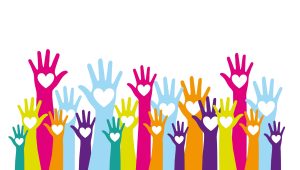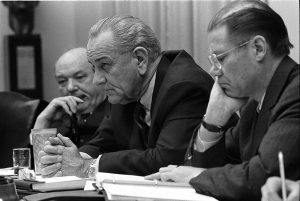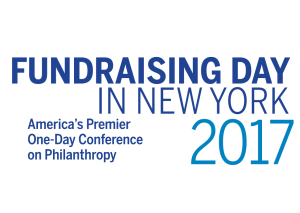American donors are now half as likely as they were in April to say they will stop or slow their giving in the coming year (34% then to 18% now), according to a new donor survey. And, half of donors polled said they hadn’t finished their 2020 giving yet, a proportion that held true for even the wealthiest giving households.
However, it would seem many donors in the “give less” category in the current poll now say they are unsure about what next year’s giving will hold (5% then to 15% now). Uncertainty is strongest among households earning less than $25,000 annually (22%), political moderates (18%) and women (17%).
The poll of 629 U.S. donors was conducted online by Campbell Rinker this past Dec. 2 through 7 just after just after #GivingTuesday. Responding donors had given at least $20 to a charitable organization during the previous year. The sample was stratified by age and gender, and weighted to reflect the U.S. population by age. Margin of error is ±3.9% at the 95% confidence level, according to information from Campbell Rinker.
The share of donors who say they will give either the same amount or give more in 2021 vs. 2020 increased slightly for both categories. Two thirds of donors (67%) expect to give the same or more in 2021 as in 2020. This figure is an increase from 61% from a comparable question in April.
The underlying trends for household giving show that 2021 might be another challenging year for nonprofits. In mid-2018, the average U.S. donor household reported giving $2,250 to charity in the prior year. The donors in this poll estimated giving an average of $1,500 during 2019. During 2020, donors have consistently reported lower confidence than they did in the last comparable poll in 2018.
“These figures show that American donors are certainly taking things one step at a time. Declining donor confidence in 2020 has led to greater uncertainty about giving in 2021,” said Dale Berkey, president of BBS & Associates in Akron, Ohio, sponsor of the poll. “Nonprofit managers must “respond by showing more impact, affirm each donor’s giving and make sure their requests are clear, compelling, and match demonstrated donor interests whenever possible,” according to Berkey.
Between 2017 and 2019, donors reported a 50% drop in giving to U.S. health and medical charities, and a 46% drop in giving to local places of worship. Average giving to international development groups saw a decline of 41%. The only two nonprofit sectors to see household giving rise were arts and cultural institutions (28% increase) and social services groups (5% increase).
“Giving to places of worship outpaces charitable giving to other sectors in the average household by a three to two margin,” according to Dirk Rinker, president of Campbell Rinker. “It 1ends to be a leading indicator for giving to all sectors. Time will tell how ongoing trends are altered by the impact of COVID lockdowns on church attendance.”
Thanksgiving & #GivingTuesday
Three in 10 donors gave to any charitable cause during the week ending on #GivingTuesday (31%), including 40% of donors in the Boomer generation and older. Self-described conservative donors were significantly more likely than politically moderate donors to have given around Thanksgiving (38% vs. 25%).
One-quarter of the donors who gave in the week prior to and including #GivingTuesday supported a cause new to them for the first time (27%). This group was significantly more likely to include Millennials and younger donors (41%) than older generations.
Aside from improved finances (the most common reason for giving more), three in 10 donors believe that freedom from COVID-19 concerns would be most likely to increase their charitable giving during 2021 (31%). Nearly the same proportion (28%) said lower taxes would help them give more, while a quarter (26%) said they would give more if they felt confident in their good health. Just less than one-quarter (23%) said they would feel better about giving more if they had confidence in federal leadership and/or government action or felt unlimited personal growth opportunities (22%). Younger donors tend to express each of these sentiments more strongly than older donors.
Apart from financial distress (the typical reason for giving less), concerns regarding increased taxes led all other reasons for reduced giving in 2021. This was cited by 28% of donors and a significantly greater 35% of conservative donors. Following this is a fear of contracting COVID-19, shared by 27% of donors overall and a significantly stronger group of younger donors — 33% of Millennials have this concern and 28% of GenX donors, compared with 16% of Boomer and older donors – who are paradoxically are at greater risk of severe illness.
Uncertainty regarding federal leadership and/or government actions are a concern for a quarter of donors and could drive lower giving (26%). The same was true for health issues other than COVID-19 (26%). One in six donors cite limited opportunities for personal growth as a barrier to giving (18%), while just one in eight cite safety concerns due to less policing (13%. Notably, this barrier spikes among younger donors at 17%).
Considering the election results, four in 10 donors (38%) expect their personal finances to remain the same. This figure was significantly higher for Boomers (52%) and donors earning $75,000 or more annually (49%). Three in 10 donors expect their financial situation to improve (29%) under a new administration, including an elevated proportion of Millennials, non-Whites and self-described liberals (40% each).
Just 15% said they expect their financial situation to get worse — a feeling shared by a significantly higher 24% of politically conservative donors. One in six donors don’t know what to expect (18%), including a significantly higher share of donors making under $25K annually (24%), women and GenX donors (both 22%).












